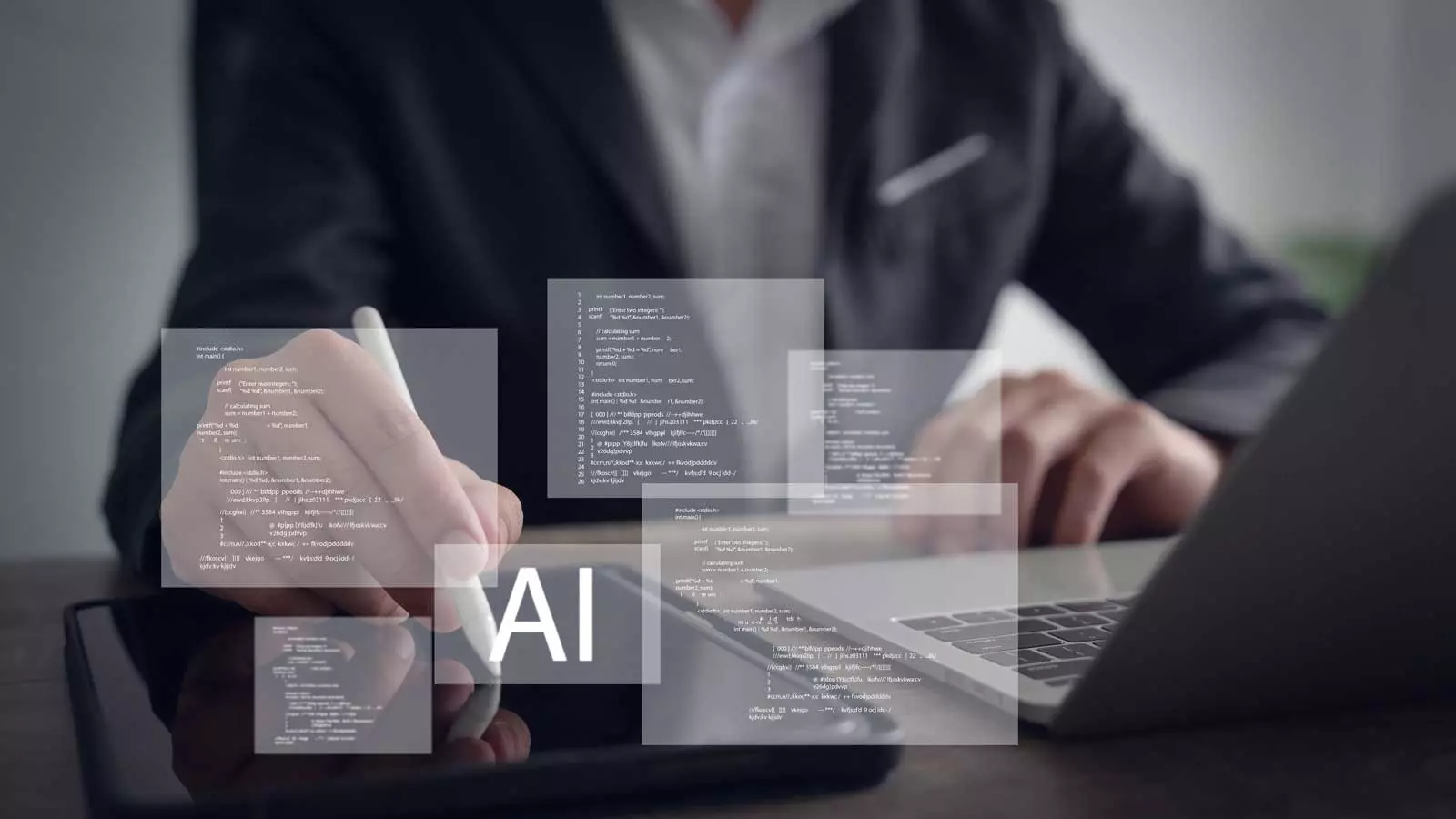Where should I start with AI adoption in the manufacturing industry?

The introduction of AI in the manufacturing industry is no longer an option, but a necessity. Global manufacturing companies are investing more than $50 billion annually in AI by 2023, and the market size is expected to reach $200 billion by 2025.
In particular, the introduction of AI in the areas of predictive maintenance, quality control, and process optimisation is showing remarkable results, improving productivity by 30-45% and reducing operating and maintenance costs by up to 60%.
However, many manufacturing companies are aware of the need to adopt AI, but are wondering where and how to start. This is due to the initial investment costs, technical complexity, and concerns about failure. If the right starting point is not found, the adoption of AI can lead to a large waste of money.
Where to start with the adoption of AI in manufacturing?
Predictive maintenance: The area with the fastest ROI
Predictive maintenance is attracting attention as the first step in introducing AI in manufacturing sites because it is the area where the cost-effectiveness has been proven most clearly.
Production stoppages due to equipment failure can result in tens of millions of won in losses per hour, and unplanned emergency maintenance work increases maintenance costs by up to 10 times.
In particular, in the case of continuous processes or equipment industries, unexpected equipment failures can lead to the shutdown of the entire production line, causing even greater damage.
The core of the AI-based predictive maintenance system is to collect and analyse various sensor data in real time. Data collected from various sensors, such as vibration, temperature, noise, and current, is processed through time series analysis and machine learning algorithms.
In this process, the pattern of a normal state can be learned, and any abnormal signs can be detected immediately. In particular, the latest AI models can go beyond simple anomaly detection, and predict the remaining life until a failure occurs and suggest the optimal maintenance time.

Predictive AI is attracting attention in the manufacturing industry because it shows the clearest ROI throughout the entire process. Production stoppages due to equipment failure can result in tens of millions of won in losses per hour, and the opportunity cost of excess inventory or out-of-stock conditions also significantly threatens a company's profitability.
In particular, accurate forecasting has become a key factor in corporate competitiveness in the current era of increasing uncertainty in the global supply chain.
The core of the AI-based prediction system lies in the integrated analysis of various data in real time. Various data such as sensor data from facilities, production history, quality inspection results, market trends, and weather information are processed using time series analysis and machine learning algorithms.
This enables multidimensional predictions such as equipment failure prediction, demand prediction, and quality prediction.
For example, in the demand forecasting area, more accurate forecasts are made by comprehensively analysing not only historical sales data but also social media trends, competitor trends, and macroeconomic indicators. This leads to optimisation of inventory management, which finds a balance point that minimises inventory holding costs while enabling timely supply.
In terms of quality control, the correlation between process parameters and quality is learned to predict defects in advance and suggest optimal process conditions to prevent them.
Furthermore, supply chain management enables the establishment of stable production plans by predicting changes in raw material prices, supplier risks, and transportation delays.
The key to building a predictive AI system lies in accurate data collection and model optimisation. It is necessary to define the data required for each area and build a collection system that can ensure the quality of the data.
In addition, predictive models require continuous performance validation and updates, and must be able to quickly reflect new patterns or variables when they occur.
Successful operation of a predictive AI system requires the active use of domain knowledge from on-site experts. AI is not a tool that replaces the experience and intuition of experts, but rather a tool that supplements and strengthens it with data-based insights.
Therefore, it is important to collect opinions from the field from the system implementation stage and build a decision support system that can effectively utilise the prediction results in the workplace.
Quality control: A field where immediate effects are visible
The AI-based quality control system is the area that shows the most dramatic changes in the manufacturing field. Traditional quality inspection relies on sampling or visual inspection, making it difficult to maintain consistency, and the accuracy can vary greatly depending on the fatigue of the inspector.
In addition, it was physically impossible to inspect all products on the high-speed production line. The AI vision inspection system fundamentally solves this limitation and implements a fully automated inspection system that can operate continuously for 24 hours.
Modern AI-based quality control is evolving beyond simple image recognition to integrate multi-sensor data. Data collected from various sensors, including optical sensors, thermal imaging cameras, and ultrasonic sensors, is processed in real time by a deep learning model to detect even the slightest quality deviations.

What is noteworthy is the development of transfer learning technology, which has made it possible to achieve high accuracy with a small amount of data.
The most important thing in building a quality control system is the accuracy of data labeling. High-quality labeled data is essential for training AI models, which means that the experience and knowledge of field experts must be systematically reflected in the data.
Therefore, we must start by establishing a classification system for defect types and establishing clear criteria for each defect. In this process, the key task is to convert tacit knowledge of on-site inspectors into explicit knowledge.
Another important feature of the AI quality management system is that it enables preventive quality control. The system goes beyond simply identifying defective products and provides insights for process improvement by analysing the patterns and causes of defects.
For example, it is possible to derive a correlation between a specific process parameter and the occurrence of defects, or to quantitatively analyse the impact of changes in environmental conditions on product quality. This makes it possible to proactively adjust the process before defects occur.
An important factor to consider when applying this technology on-site is the robustness of the system. It must be able to maintain consistent performance even when environmental factors such as lighting conditions, vibration, and temperature change on the manufacturing floor.
To this end, it is necessary to use data augmentation techniques to secure training data under various conditions and strengthen the model's generalisation ability.
In addition, it is necessary to build an operating system that monitors the system's judgement results in real time and enables immediate action when a performance degradation is detected.
The introduction of such an AI-based quality control system goes beyond simply reducing the defect rate or inspection costs and fundamentally strengthens the quality competitiveness of manufacturing companies. In particular, for high-value-added products or parts where safety is important, the introduction of AI systems is becoming a necessity rather than an option.
Optimising production processes: the foundation of company-wide efficiency improvement
Optimising production processes is the ultimate goal of AI adoption and the area where the greatest value can be created. Process optimisation through real-time data analysis can dramatically improve the efficiency of the entire production system, beyond the improvement of individual facilities or processes.
In particular, the combination of digital twin technology and AI is enabling a level of sophisticated process control and optimisation that was not possible before.
The key to AI-based process optimisation lies in understanding the interactions between complex process variables and deriving optimal operating conditions.

In modern manufacturing processes, there are hundreds of control variables, which are intricately intertwined with each other, making it almost impossible to optimise using traditional methods. However, AI systems can effectively handle this complexity through reinforcement learning and optimisation algorithms.
For example, in chemical processes, numerous variables such as temperature, pressure, flow rate, and concentration can be adjusted in real time to find operating conditions that maximise yield while minimising energy consumption.
The first step in building a system is to create a digital twin of the process. This means that all aspects of the physical process must be accurately reproduced in a digital space.
Therefore, it is necessary to build an environment that combines sensor data and process models to simulate the process status in real time and safely test various operation scenarios.
The most important thing in this process is to find the right balance between physical and data-based models. A purely data-based approach may violate physical constraints, and conversely, relying solely on physical models may not fully reflect the complexity of the actual process.
The design of an optimisation algorithm must be able to effectively handle multi-objective optimisation problems. This is because it must find the optimal balance between several conflicting goals, such as productivity, quality, energy efficiency, and equipment life.
The latest AI technology can solve these complex decision-making problems through advanced techniques such as Pareto optimisation. Of particular note is the ability to learn online, which allows the optimisation strategy to be continuously adjusted according to changes in process conditions or external environments.
In practical implementation, a phased approach is essential. It is desirable to first build a system for core processes or bottlenecks, create a success story, and then gradually expand the scope. In this process, the participation and feedback of on-site operators is very important.
AI systems should be used as a tool to complement and enhance operators' experience and intuition, not replace it. Therefore, it is necessary to actively introduce Explainable AI technology so that operators can understand and trust the system's decision-making process.
Key strategies for the successful introduction of AI in the manufacturing industry
Building a data infrastructure is the top priority
The performance of an AI system is directly proportional to the quality and quantity of data, which means that the establishment of a data infrastructure is a key factor in determining the success or failure of AI adoption.
The establishment of a data infrastructure at manufacturing sites should be approached from three main aspects. First, the establishment of sensors and data collection systems. This requires more than just installing sensors; it requires a systematic plan to ensure the reliability and accuracy of the data.

In particular, when it comes to legacy equipment, the location and method of installing sensors for data collection is very important. Incorrect sensor installation can generate noisy data or even interfere with equipment operation.
In addition, the data collection cycle and storage method must be carefully determined. A collection cycle that is too short will take up unnecessary storage space and increase processing load, while a cycle that is too long may miss important patterns.
Second, data standardisation and the establishment of a quality management system. Data collected from different facilities and systems must have a unified format and semantic system.
To this end, a data modelling and metadata management system must be established, and an automated process for data cleansing and verification is also required. In particular, clear standards must be established for the detection and handling of outliers and methods for filling in missing values.
Phased approach and expansion
In order to successfully introduce AI, it is important to secure the trust and support of the organisation through ‘quick wins’. To do this, it is desirable to start with an area that can be measured clearly and is relatively easy to implement.
For example, you can build a predictive maintenance system for a specific facility on a single production line, operate it successfully, and then expand it to other facilities.
The important thing in this phased approach is the design of a system that takes scalability into account. From the initial construction stage, the architecture should be designed with future expansion in mind, and the data model and interface should be implemented in a scalable form.
In addition, a knowledge management system is needed to systematically document the lessons learned and know-how gained at each stage and effectively apply them to the next stage.
What is particularly important is the management of organisational change. The introduction of an AI system involves more than just the implementation of technology; it also entails changes in work processes and organisational culture.
Therefore, it is necessary to actively collect the participation and feedback of on-site employees at each stage and provide them with the necessary training and support. It is also important to actively share successful cases within the organisation to reduce resistance to the introduction of AI and encourage voluntary participation.
In closing
The introduction of AI in the manufacturing industry is no longer an issue that can be put off. The manufacturing industry around the world is accelerating its digital transformation through AI, which will soon become a matter of survival for companies.
The important thing is to find the right starting point and achieve a successful introduction through a systematic approach. The introduction of AI will be the key to opening a new paradigm in the manufacturing industry, beyond the mere introduction of technology.


.svg)
%202.svg)
.svg)


.svg)















